Perilla
[Medicinal Use] This product is the stem and leaf of the Lamiaceae plant Perilla.
[Nature and flavor and meridians] Spicy and warm. Enters the lung and spleen meridians.
[Effects] Induces sweating and relieves exterior symptoms, promotes qi and relieves the middle, and relieves fish and crab poison.
[Clinical Application] 1. Used for colds and wind-cold
Perilla can disperse exterior cold and has a strong sweating power. It is used for wind-cold exterior symptoms, such as aversion to cold, fever, and no sweating. It is often used with ginger; if the exterior symptoms are accompanied by qi stagnation, it can be used with Cyperus rotundus and dried tangerine peel.
2. Used for chest tightness, nausea and vomiting
Perilla is used for spleen and stomach qi stagnation, chest tightness, and nausea. Whether there are exterior symptoms or not, it can be used. It is used for its role in promoting qi and relieving the middle. It is often used in combination with Patchouli in clinical practice. In addition, this product can promote qi and stabilize the fetus. It is often used with Amomum villosum and dried tangerine peel to treat nausea and fetal movement disorder during pregnancy.
3. Used for vomiting, diarrhea and abdominal pain caused by eating fish and crabs
Perilla is pungent and warm, and can detoxify fish and crabs. After being poisoned by fish and crabs, you can use perilla alone or with ginger.
[Prescription name] Perilla, perilla leaves (wash, dry, and chop)
[General dosage and usage] One to three coins, decoct.
[Comments] Perilla can not only induce sweating and dispel cold to relieve the exterior evil, but also promote qi and relieve the middle, relieve depression and stop vomiting. Therefore, it is very suitable for wind-cold symptoms with chest tightness and vomiting; or for those with no exterior symptoms but symptoms of qi stagnation, it can also be used for ventilating. If it is combined with Patchouli and Tangerine Peel, it can relieve the exterior and harmonize the middle, and if it is combined with Pinellia and Magnolia Bark, it can relieve depression and relieve chest tightness.
[Example of prescription] Xiangsu Powder (Heju Prescription): Cyperus, Perilla, Tangerine Peel, Licorice. Treats exogenous wind-cold, internal qi stagnation, headache without sweating, chest fullness, belching and aversion to food.
Suqiang Dabiao Decoction (Tongsu Shanghan Lun): Perilla leaf, Saposhnikovia divaricata, Apricot kernel, Qianghuo, Angelica dahurica, Guangjuhong, ginger, Poria peel. Treats colds, fever, chills, stiff neck and head pain, joint pain, wheezing without sweating, chest fullness and nausea.
[Literature excerpt] “Bielu”: “It can relieve qi and eliminate cold.”
“Yaoxing Bencao”: “Eating the leaves raw to make soup can kill all fish and meat poisons.”
“Compendium of Materia Medica”: “It can relieve muscles and release exterior, dissipate wind and cold, promote qi and relieve stomach, eliminate phlegm and benefit the lungs.”
“Bencao Zhengyi”: “Perilla has a strong aroma… It can open the skin and fur, release lung qi and open the pores. It can relieve nasal congestion and clear the head and eyes, and is a miraculous medicine for wind and cold external infection; it can open the chest and diaphragm, wake up the spleen and stomach, promote the transformation of phlegm and fluid, relieve depression and benefit qi stagnation.”
Perilla, Perilla Frutescens, is a Chinese medicine name. It is the stem and leaf of Perilla frutescens (L.) Britt. of the genus Perilla in the Lamiaceae family. Its leaves are called Perilla leaves, and its stems are called Perilla stems. It has the effects of dispelling cold, promoting qi and relieving fullness, calming the fetus, and detoxifying fish and crab. It is mainly used for colds caused by wind and cold, stagnation of qi in the spleen and stomach, chest tightness and vomiting, upward reversal of fetal qi, restless fetal movement, plum pit qi syndrome caused by seven emotions stagnation, phlegm stagnation and qi stagnation, and abdominal pain, vomiting and diarrhea caused by eating fish and crab poisoning.
Perilla leaf, southern perilla, stinky perilla, mountain perilla
Nature and flavor meridian
Taste is spicy, slightly hot; enters the cold meridian
Classification of medicinal materials
Plant
Effects and effects
Function
Dispelling cold, promoting qi and relieving fullness, calming the fetus, and detoxifying fish and crab.
Indications
1. It is used for colds caused by wind and cold, stagnation of qi in the spleen and stomach, chest tightness and vomiting, upward reversal of fetal qi, restless fetal movement, plum pit qi syndrome caused by seven emotions stagnation, phlegm stagnation and qi stagnation, and abdominal pain, vomiting and diarrhea caused by eating fish and crab poisoning, etc.
2. Patients diagnosed by Western medicine as suffering from cold and flu, as well as those suffering from dyspepsia and other stomach diseases, gastritis and duodenitis, unspecified gastritis and duodenitis, habitual vomiting, nausea and vomiting, excessive vomiting during pregnancy, etc., as suffering from spleen and stomach qi stagnation.
Gebruik en Dosis
Perilla leaf: 5-10g for internal use. For external use, mash and apply, grind into powder and mix with or wash with decoction.
Perilla stem: 5-10g for internal use; or add into powder.
Contraindications
1. Contraindications for the combination of Chinese and Western medicines:
(1) When used in combination with sedatives and anesthetics, the dosage should be reduced.
(2) Perilla can prolong the effect of barbiturates, so pay attention to reducing the dosage when used together.
2. Dietary taboos: Do not eat raw, cold, or irritating foods; avoid carp.
Voorsorgmaatreëls
Patients with yin deficiency, qi deficiency, or febrile diseases should take with caution.
Chemiese samestelling
Contains volatile oils, mainly perillaldehyde, levorotatory limonene and a small amount of α-pinene.
Farmakologiese effekte
1. Antibacterial effect: It has different degrees of inhibitory effects on Staphylococcus, Streptococcus, Typhoid Bacillus, Escherichia coli, Shigella dysenteriae, Corynebacterium diphtheriae, Neisseria meningitidis, Catarrhalis, influenza virus and Candida albicans. It can inhibit the growth of filamentous fungi on the skin.
2. Antipyretic effect: It can dilate skin blood vessels, stimulate sweat gland secretion and relieve fever.
3. Effect on the central nervous system: Both water extract and perillaldehyde can prolong the barbiturate sleep time of male rats. It has the function of inhibiting the upper laryngeal nerve reflex of cats, inhibiting the excitatory membrane of snail nerve cells and frog sciatic nerve fibers. Water extract can inhibit the amount of exercise in rats. Perillaldehyde has a sedative effect.
4. Effects on the respiratory system: It can reduce bronchial secretions, relieve bronchospasm, and has a significant antitussive effect on cough caused by acrolein or citric acid. The mouse phenol red test is positive, which proves that perilla has expectorant, antitussive and antiasthmatic effects.
5. Effects on the digestive system: It can promote the secretion of digestive juices and increase gastrointestinal motility.
6. Effects on the reproductive system: It can inhibit uterine contraction and have a fetal protection effect.
7. Effects on metabolism: Under the premise of giving equal calorie and equal nitrogen food, the weight, liver weight, plasma cholesterol, liver cholesterol, blood sugar, and acid phosphate activity of rabbits fed with perilla oil are all higher than those of the control group to varying degrees.
8. Hemostatic effect: Perilla can shorten the coagulation time, plasma recalcification time and thromboplastin time.
Toxicological effects
Perilla components: Perilla ketone and others can cause extensive pulmonary edema and a large amount of peritoneal exudate in animals. The median lethal dose of intraperitoneal injection in mice is less than 10 mg/kg, and the animals can die within 24 hours. Intravenous injection of 0 mg/kg of perilla ketone to female goats and intravenous injection of 30 mg/kg to Angus heifers can both cause death, while oral administration of 40 mg/kg can still keep the animals alive. The median lethal dose of perilla ketone in mice is 13.6 mg/kg by intraperitoneal injection, and 789 mg/kg by oral administration.
Related discussions
1. “Compendium of Materia Medica”: Perilla frutescens, with its hot nature, can disperse the upper diaphragm and the cold evil on the surface, because of its light nature. Dongyuan said that it can disperse the qi because of its hot nature.
2. “Compendium of Materia Medica”: (Perilla frutescens) has three uses: such as colds and typhoid fever, headaches and bone pain, aversion to cold and fever, limb discomfort, or beriberi, hernia, and the evil is on the surface, perilla leaves can disperse the evil and relieve the surface. Qi stagnation and fullness in the middle, chest and diaphragm discomfort, or fetal qi pressing, abdominal and flank distension and pain, perilla stems can smooth the qi and relieve the middle. If there is asthma and wheezing, perilla can calm asthma and lower the qi; if there is phlegm and fire rushing, perilla can lower the fire and clear the phlegm. The three are used differently, and the method should be detailed. Perilla can dissipate cold air, clear the lung qi, relax the middle qi, calm the fetus, lower the qi, and transform phlegm qi. It is a magical medicine for treating qi. The word “Su” means to sparse, which means to relax and loosen the perilla.
3. “Pharmaceuticals”: Perilla leaves, leaves belong to Yang, and are things that produce. It is pungent and warm and can disperse, and the qi is thin and can be vented. It is specially used to relieve muscles and release the exterior. It can treat colds, colds, and the initial onset of malaria, exogenous cholera, damp-heat beriberi, and all superficial symptoms. It is also a key medicine for releasing evil qi.
4. “Ben Cao Cheng Ya Ban Jie”: (Perilla) is a new and old dispersing agent and a light agent. Therefore, those who are in charge of qi going down can be dispersing; those who are in charge of qi going up can be dispersing. The leaves tend to be more dispersing, the stems tend to be more dispersing, and the seeds have both, but the nature is slightly slower.
5. “Changsha Yaojie”: The pungent and dispersing nature of perilla leaves is good at breaking up the condensed cold and rushing down, expanding the chest and abdomen and eliminating fullness, so it can treat the symptoms of chest congestion and clear the meridians and veins, dispersing wind and cold, and it is a medicine for both Chinese and foreign medicines.
6. “Cui Jinqiu Materia Medica Record”: Those with upward qi can be restrained, and those with downward qi can be released. Perilla is mainly used to treat beriberi. All diseases caused by qi congestion have different causes, but all of them are due to the inability of qi to return to its origin. The yin of the human body is originally below, and its ascent is led by the yang in the yin; the yang of the human body is smooth above, and its descent is led by the yin in the yang. Perilla tastes pungent and enters the lungs, and its purple color enters the heart. When the heart and lungs combine and transform qi, the qi will naturally return to its origin.
7. “Bencao Zhengyi”: Perilla has a strong fragrance. It can open the skin and fur, release the lung qi and open the pores; it can clear the nasal congestion and clear the head and eyes, and is a miraculous medicine for wind-cold external infection; it can open the chest and diaphragm, wake up the spleen and stomach, dissipate phlegm and fluid, relieve depression and benefit qi stagnation.
Clinical application
1. Wind-cold cold: This product is pungent and warm in nature, and its sweating, relieving the surface and dispersing the cold are relatively mild. It can be used alone for mild symptoms, and it must be used in combination with other wind-cold dispersing drugs for severe symptoms. Because it can relieve the surface and dissipate the cold externally, promote qi and relieve the middle internally, and slightly resolve phlegm and relieve cough, it is more suitable for wind-cold symptoms with qi stagnation, chest and abdominal fullness, nausea and vomiting, or coughing and wheezing with a lot of sputum. To treat the former, it is often combined with drugs such as cyperus and tangerine peel, such as Xiangsu San (“Heji Ju Fang”). To treat the latter, it is often used with drugs such as apricot kernel and platycodon, such as Xingsu San (“Wenbing Tiaobian”).
2. Spleen and stomach qi stagnation, chest tightness and vomiting: This herb is pungent and can move qi, relieve bloating, harmonize the stomach and stop vomiting, and has the function of regulating qi and calming the fetus. It can be used to treat chest and abdominal distension, nausea and vomiting caused by stagnation of qi in the middle jiao. For those with a cold tendency, it is often used with warm anti-vomiting drugs such as Amomum villosum and Clove; for those with a hot tendency, it is often used with stomach-clearing and anti-vomiting drugs such as Coptis chinensis and Reed Root. If the fetal qi is reversed, chest tightness and vomiting, and fetal movement is restless, it is often used with Amomum villosum, Tangerine peel and other Qi-regulating and fetal-calming drugs. It is used to treat the plum pit qi syndrome caused by seven emotions stagnation, phlegm stagnation and qi stagnation, and is often used with Pinellia ternata, Magnolia bark, Poria cocos, etc., such as Banxia Houpu Decoction (“Golden Chamber Synopsis”).
3. In addition, Perilla frutescens can detoxify fish and crabs. For those who have abdominal pain, vomiting and diarrhea caused by eating fish and crabs, it can harmonize the middle and detoxify. This product can be used alone as a decoction, or combined with ginger, tangerine peel, Patchouli and other drugs.
Related compatibility
1. Perilla with Patchouli: Both herbs can dispel cold, regulate qi and harmonize the middle. Perilla is good at promoting qi and relieving the middle; Patchouli is good at removing dampness and harmonizing the middle. When used together, they can dispel cold, regulate qi, remove dampness and harmonize the middle. It is suitable for aversion to cold, fever, abdominal pain, vomiting and diarrhea caused by exogenous wind-cold and internal injury and dampness.
2. Perilla with cicada shell: Perilla dispels wind-cold, promotes qi and relieves the middle; cicada shell is light and ascending, dispels wind-heat, relieves sore throat and clears rashes. The two herbs are used together, and the medicinal properties are mild, which can dispel wind and dispel cold. It is suitable for patients with mild exogenous symptoms.
3. Perilla with almond: Perilla is good at dispelling cold, and can also promote lung function and resolve phlegm; almond is good at descending qi, relieving cough and relieving asthma. The two herbs are used together, which can dispel cold and relieve cold to obtain slight sweat, and can regulate lung qi to resolve phlegm and relieve cough. It is suitable for aversion to cold, headache, cough with thin phlegm, shortness of breath and nasal congestion caused by wind-cold or dryness invading the lung.
4. Perilla with Tangerine Peel: Perilla promotes qi and relieves fullness; Tangerine Peel regulates qi and regulates the middle, dries dampness and resolves phlegm. The combination of the two can not only regulate qi, dry dampness and resolve phlegm to treat cough, sputum and chest tightness caused by phlegm and dampness blocking the lungs, but also promote qi, relieve the middle and eliminate bloating to treat abdominal distension, nausea and vomiting caused by spleen and stomach qi stagnation.
5. Perilla with Coptis chinensis: Perilla leaves soothe the lungs, regulate qi and harmonize the stomach; Coptis chinensis clears heat, dries dampness and harmonizes the stomach. The combination of the two, one warm and one cool, plays the role of harmonizing the middle and stopping vomiting. It is suitable for day and night vomiting caused by residual dampness and heat in the lungs and stomach.
6. Perilla with Amomum villosum: Both medicines have the function of regulating qi, harmonizing the middle and calming the fetus. Perilla is good at dispelling cold and dispelling dampness; Amomum villosum is good at removing dampness. The combination of the two is often used to treat chest and abdominal distension, vomiting, nausea and fetal movement caused by internal obstruction of cold and dampness and unfavorable qi.
Differentiate medication
Perilla leaf and perilla stem: It is generally believed that perilla leaf is more inclined to dissipate cold, while perilla stem is more inclined to widen the chest and benefit the diaphragm, smooth the qi and stabilize the fetus. For the treatment of wind-cold exterior syndrome, perilla leaf is often used; for the treatment of chest and abdominal qi stagnation, fullness and distension, fetal movement disorder, chest and flank distension and pain, perilla stem is often used.
Related drugs
Fenghan Ganmao Granules, Xingsu Cough Granules (Syrup, Dew, Oral Liquid), Jieji Ningsou Pills.
Related prescriptions
Xiangsu Powder (Heji Jufang), Xingsu Powder (Wenbing Tiaobian), Shensu Powder (Heji Jufang), Banxia Houpu Tang (Banxia Houpu Tang).
Medicinal Diet Therapy
Perilla Seed and Polished Rice Porridge:
1. Efficacy: relieve cough and asthma, suitable for cough, asthma, sputum, and poor appetite caused by exterior deficiency and cold evil.
2. Raw materials: 10-15 grams of perilla seeds; 50 grams of polished rice.
3. Method: grind the perilla seeds into fine powder, add water and boil, precipitate and take the juice for later use. Cook rice to make porridge, add perilla juice before it is cooked and mix well. Use it for breakfast. You can add a little rock sugar for seasoning.
Harvesting and processing
Harvest in summer and autumn, remove impurities, dry in the sun, and use raw.
Processing method
Take the original medicinal material, remove impurities, soak slightly, moisten thoroughly, cut into thick slices, and dry.
Storage method
Store in a cool and dry place, airtight.
Medicinal material properties
The leaves are mostly wrinkled, curled, and broken. The intact ones are oval, with long or sharp tips, round or wide wedge-shaped bases, and rounded edges. The edges are serrated. Both sides are purple or green on the upper side, purple on the lower side, sparsely covered with grayish-white hairs, and many concave glandular scales on the lower side. The petiole is purple or purple-green. It is brittle and easy to break. Those with tender branches have a branch diameter of 2-5mm and pith in the middle of the cross section. It has a fresh fragrance and a slightly spicy taste.
Medicinal slice properties
The perilla stem is a square-like thick slice, with a yellow-white surface and fine radial textures, and the pith is white, loose or falling off. The surrounding is purple-brown or dark purple. Lightweight and hard. Slightly fragrant, light taste.
Plant species
Perilla, a plant of the genus Perilla in the family Lamiaceae.
Morphological characteristics
Annual herb, 30-200cm tall. Has a special aroma. Stems are erect, branched, purple, green-purple or green, obtusely quadrangular, densely covered with long soft hairs. Leaves are opposite; petioles are 3-5cm long, purple-red or green, covered with long internode hairs; leaves are broadly ovate, ovate-round or ovate-triangular, 4-13cm long, 2.5-10cm wide, with acuminate or cusp at the tip, sometimes short-tailed, rounded or broadly cuneate at the base, with coarse serrations on the margins, sometimes with deeper or shallowly lobed serrations, purple on both sides or only purple on the bottom, sparsely covered with soft hairs on both sides, denser along the veins, with fine oil glands on the underside of the leaves; 7-8 pairs of lateral veins, those located at the bottom are slightly closer, obliquely ascending. The cyme is composed of 2 flowers that are slanted to one side to form a pseudoraceme, terminal and axillary, and the inflorescence is densely pubescent; the bracts are ovate, ovate-triangular or lanceolate, entire, ciliate, with glandular dots on the outside, and membranous on the edge; the pedicel is 1-1.5mm long and densely pubescent; the calyx is campanulate, about 3mm long, with 10 veins, the outside is densely pubescent and has yellow glandular dots, with 5 teeth at the top and 2 lips, the upper lip is wide and has 3 teeth, the lower lip has 2 teeth, it increases when fruiting, and the base is It is sac-shaped; the corolla is lip-shaped, 3-4mm long, white or purple-red, with a hair ring inside the corolla tube and soft hair outside. The upper lip is slightly concave, the lower lip is 3-lobed, the lobes are nearly round, and the middle lobe is larger; there are 4 stamens, two-strong, born in the middle of the corolla tube, and almost do not extend out of the corolla, and the anthers are 2-chambered; the disk is swollen in the front; there is 1 pistil, the ovary is 4-lobed, the style is born at the base, and the stigma is 2-chambered; the disk is swollen in the front; there is 1 pistil, the ovary is 4-lobed, the style is born at the base, and the stigma is 2-lobed. The nutlets are nearly spherical, gray-brown or brown, 1-1.3mm in diameter, with reticulate patterns, and the calyx is about 10mm long. The flowering period is from June to August, and the fruiting period is from July to September.
Distribution area
It is cultivated all over the country.
Authentic production area
It is produced in both the north and south of my country.
Growth practice
It likes warm and humid climate. It is better to grow in sunny, deep, loose, fertile, and well-drained sandy loam.
Reproduction method
Seed propagation, direct seeding or seedling transplanting.
Cultivation technology
1. Direct seeding method: From mid-March to late March, row sowing, dig furrows with a row spacing of 30cm, and evenly sow the seeds in the furrows and cover them with fine soil to cover the seeds; hole sowing, dig holes with a row spacing of 30cm×30cm for sowing.
2. Seedling transplanting method: sowing from late March to early April, and transplanting from late April to early May.
Disease and pest control
Diseases such as leaf spot can be controlled by spraying 70% mancozeb suspension powder in the early stage of the disease. In the early stage of rust, 25% triadimefon 1000 times solution can be sprayed for control. Pests such as silver-striped armyworm can be controlled by spraying 90% crystal trichlorfon 100 times solution or 5% carbaryl powder.
Perilla – Zi Su
Price range: $88.88 through $49,880.00
+ Gratis afleweringPerilla, Perilla Frutescens, is a Chinese medicine name. It is the stem and leaf of Perilla frutescens (L.) Britt. of the genus Perilla in the Lamiaceae family. Its leaves are called Perilla leaves, and its stems are called Perilla stems. It has the effects of dispelling cold, promoting qi and relieving fullness, calming the fetus, and detoxifying fish and crabs. It is mainly used to treat colds caused by wind and cold, stagnation of spleen and stomach qi, chest tightness and vomiting, upward reversal of fetal qi, restless fetal movement, plum pit qi syndrome caused by depression of seven emotions, phlegm and qi stagnation, and abdominal pain, vomiting and diarrhea caused by eating fish and crabs.
[Medicinal use] This product is the stem and leaf of Perilla frutescens of the Lamiaceae family. [Nature and flavor and meridians] Spicy and warm. Enter the lung and spleen meridians. [Effects] Sweating and dispelling cold, promoting qi and relieving fullness, and detoxifying fish and crabs.
Function: dispelling cold, promoting qi and relieving fullness, calming the fetus, and detoxifying fish and crabs.
Indications: 1. Used for colds, spleen and stomach qi stagnation, chest tightness and vomiting, fetal qi reversal, fetal movement disorder, seven emotions stagnation, phlegm stagnation and qi stagnation, abdominal pain, vomiting and diarrhea caused by eating fish and crab poisoning, etc.
2. Used for colds and influenza diagnosed by Western medicine as wind-cold symptoms, indigestion and other gastric diseases, gastritis and duodenitis, unspecified gastritis and duodenitis, habitual vomiting, nausea and vomiting, excessive vomiting during pregnancy, etc., which are caused by spleen and stomach qi stagnation.
| Gewig | 1 kg, 10 kg, 100 kg, 500 kg, 1000 kg |
|---|
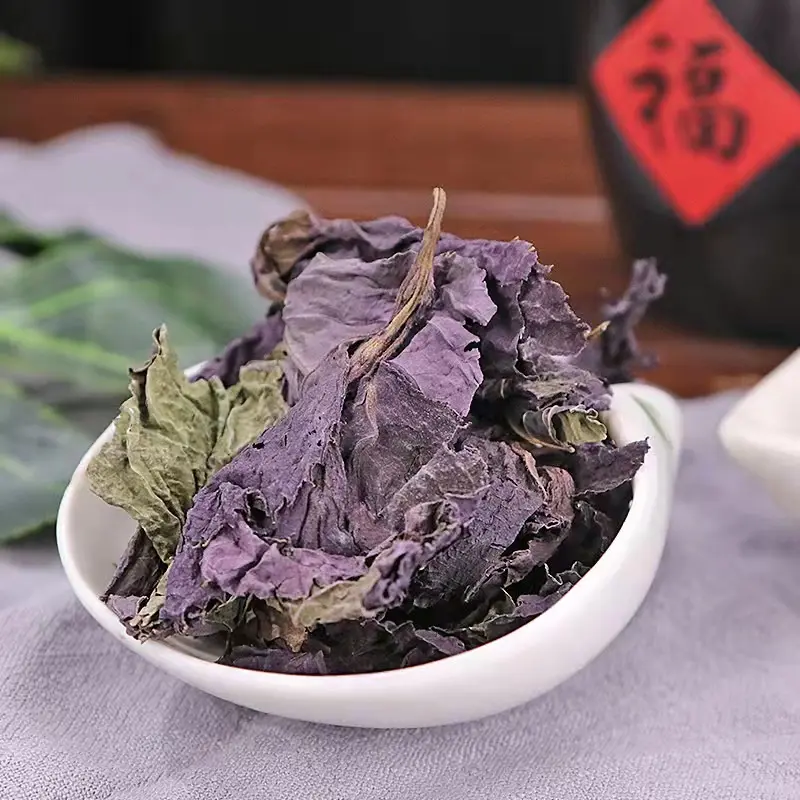
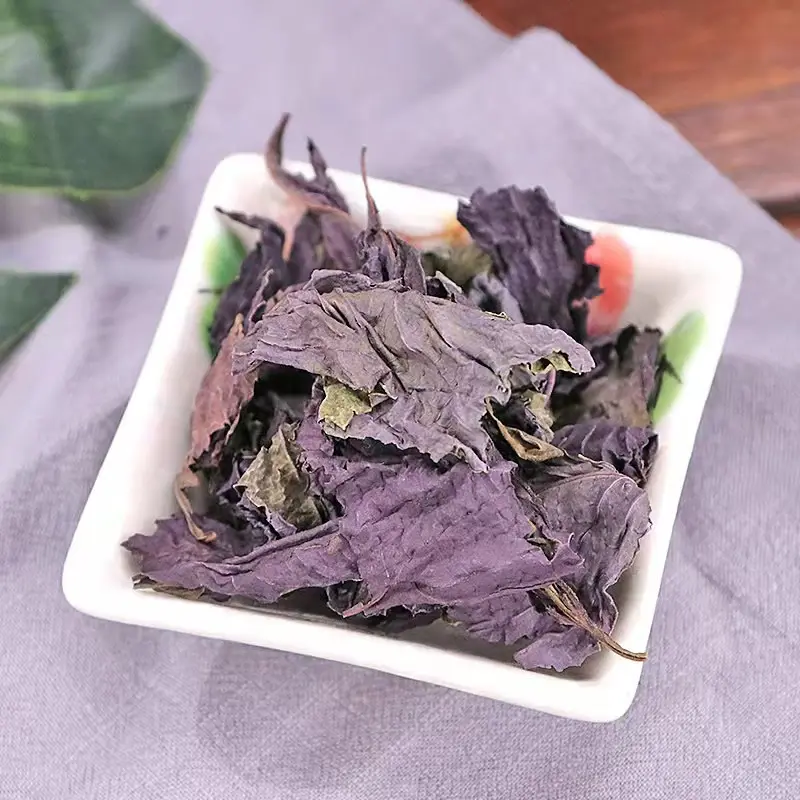
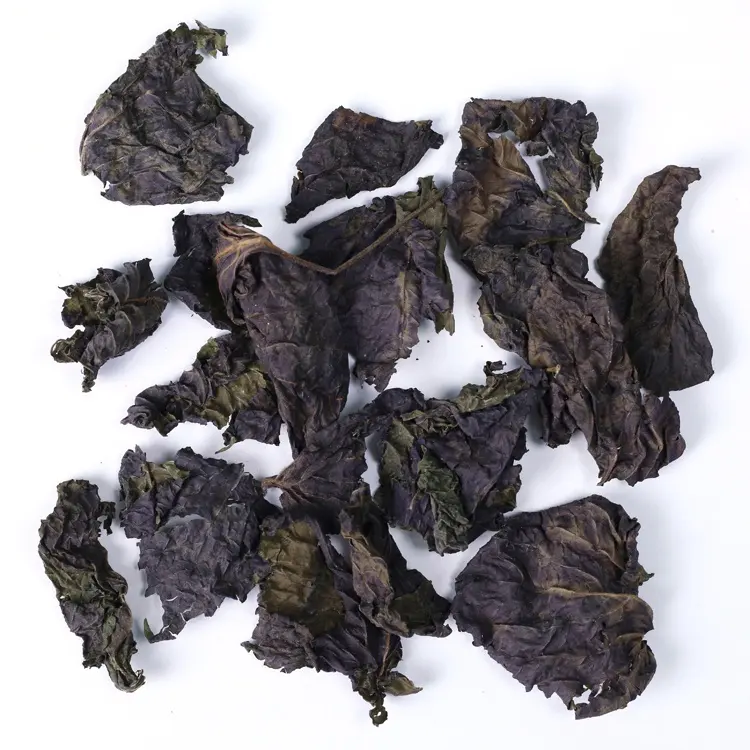
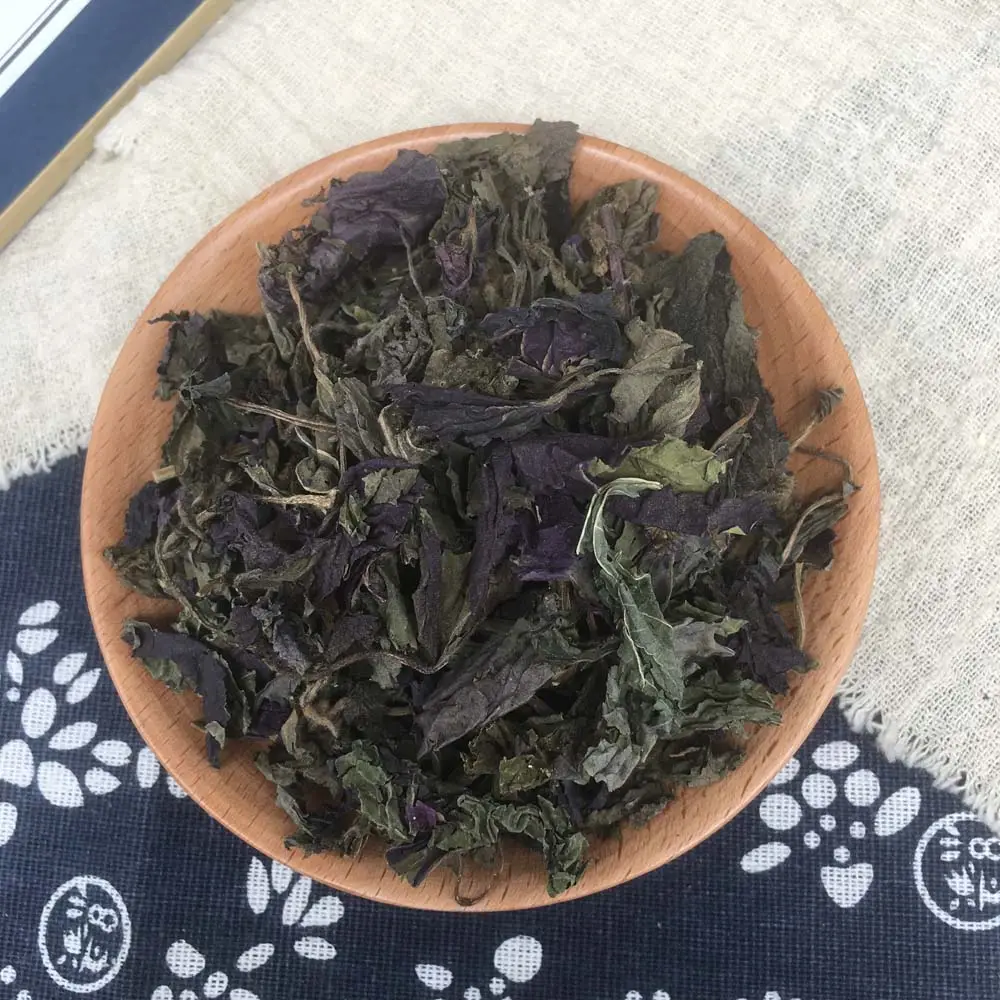
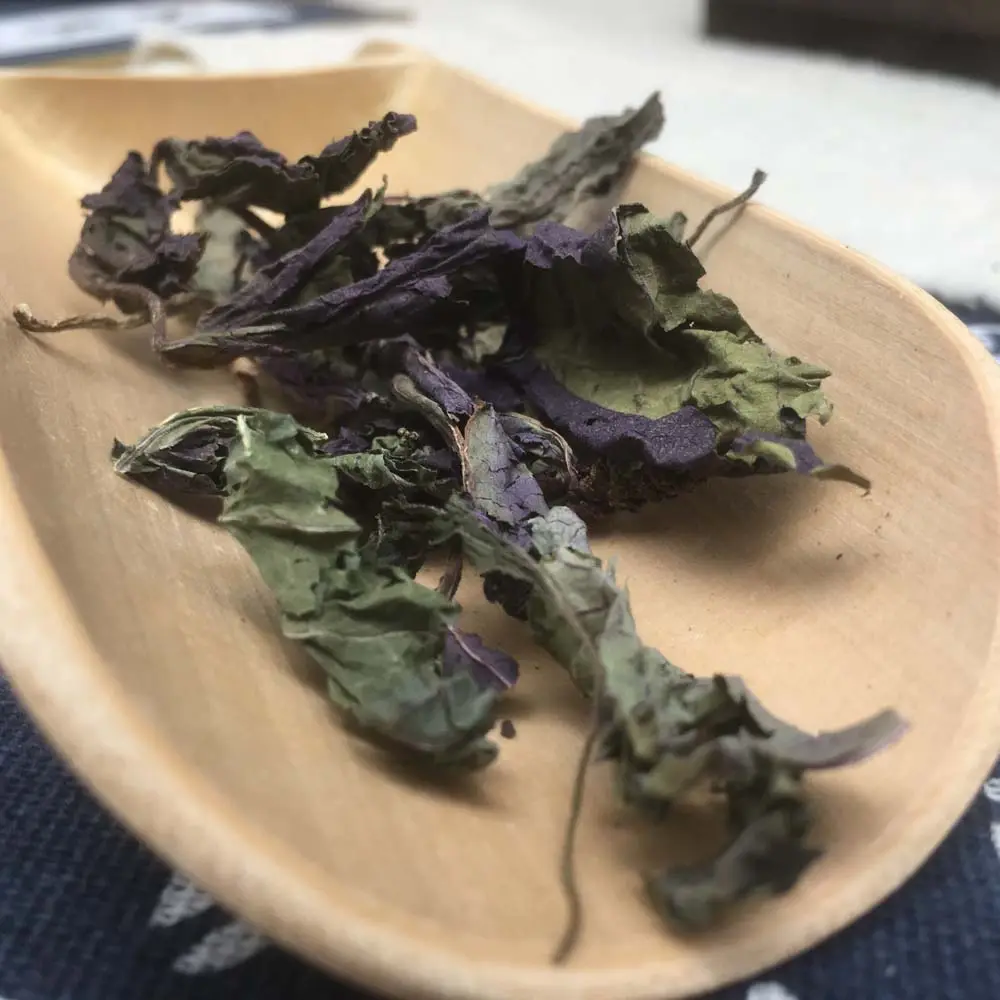
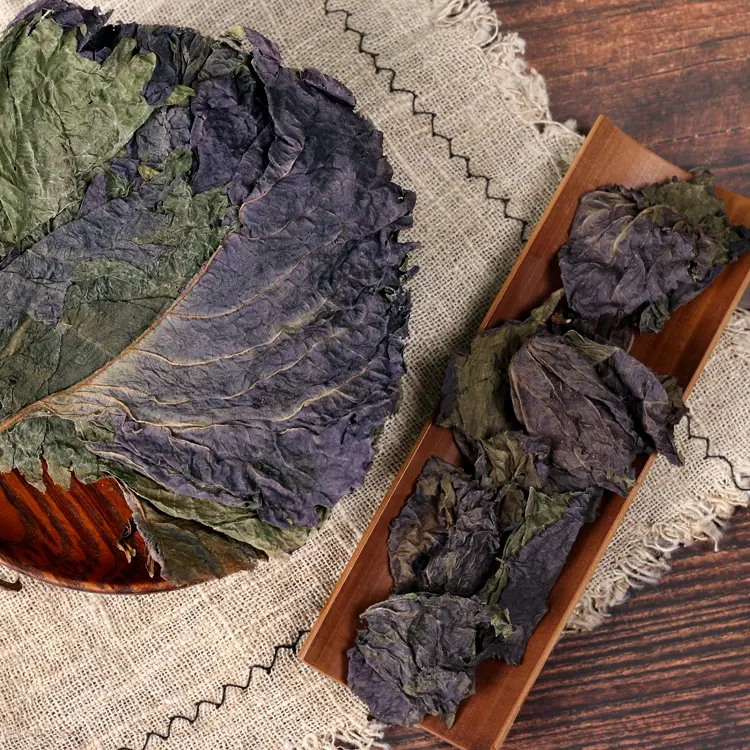
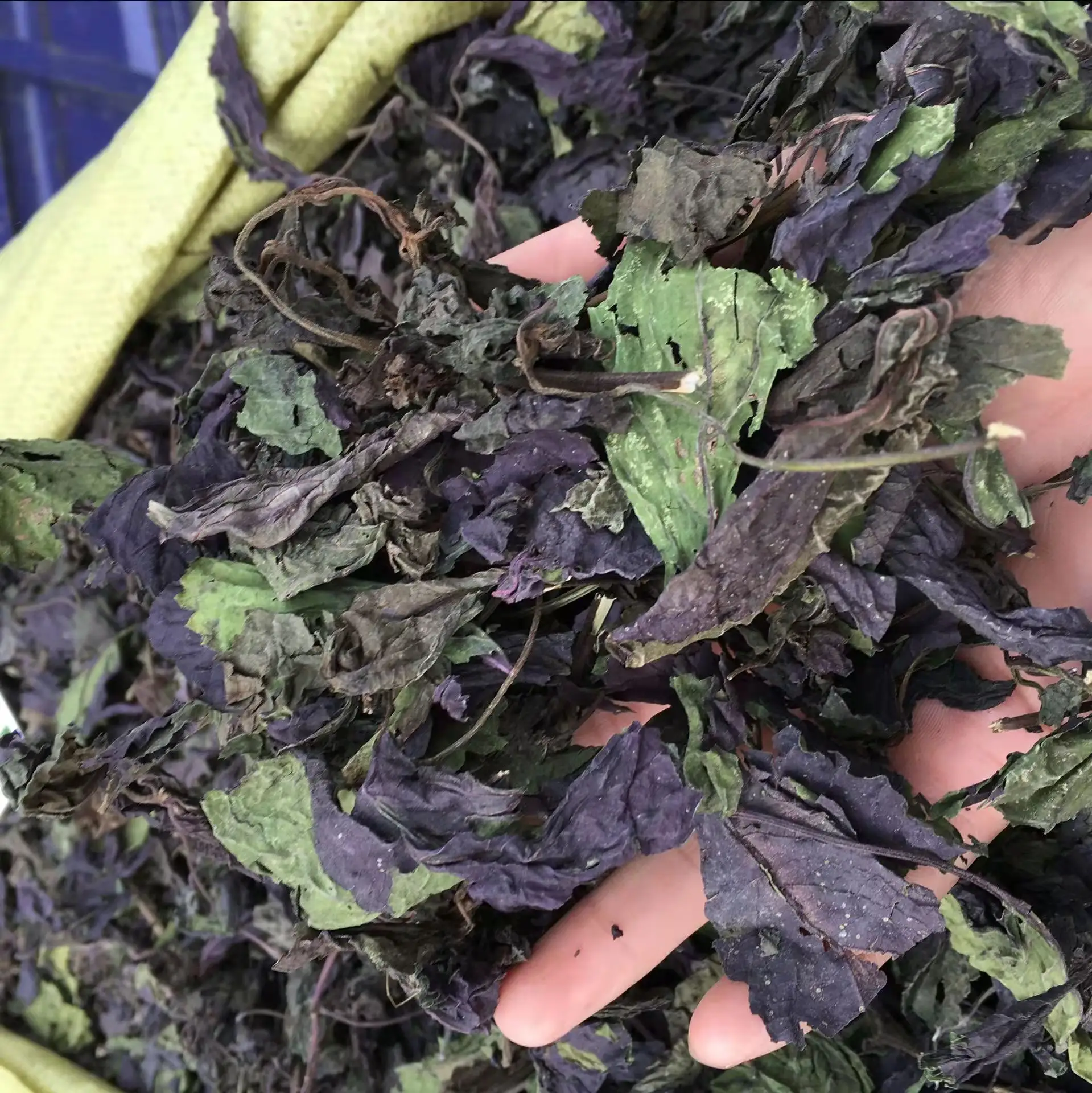
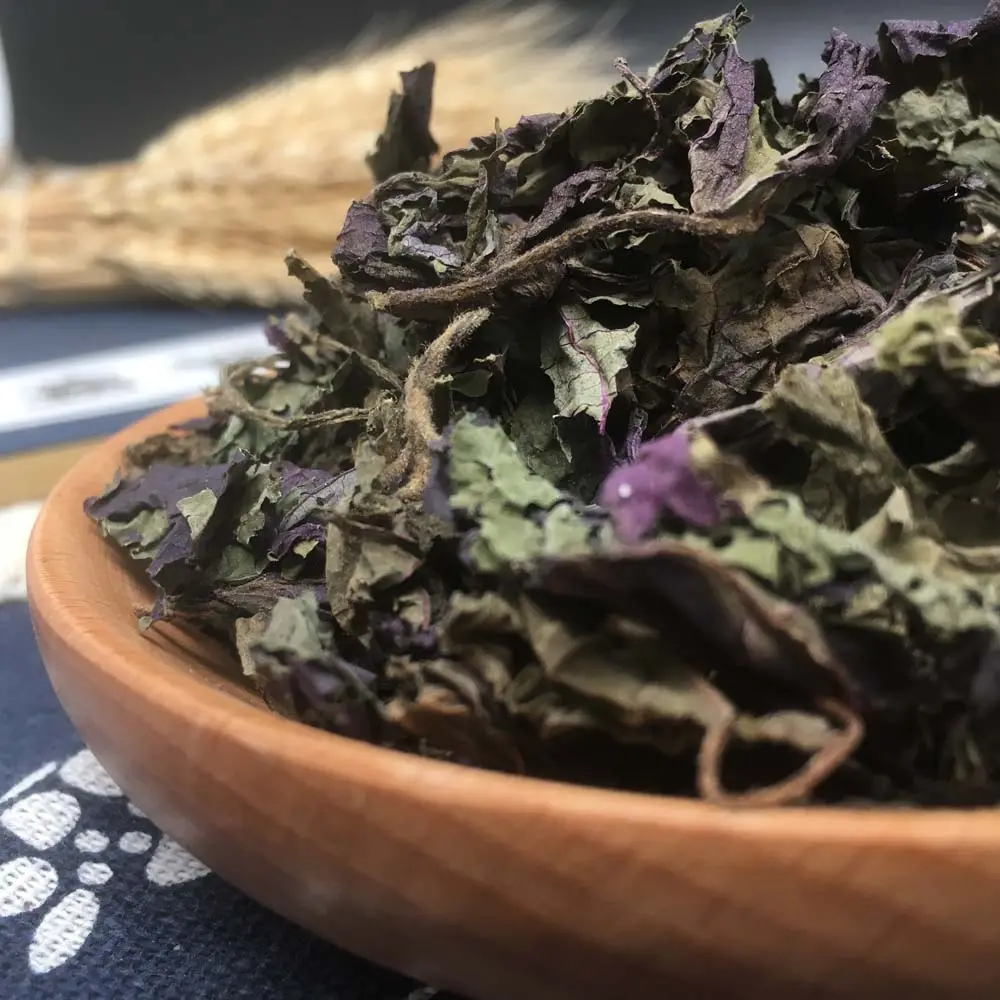
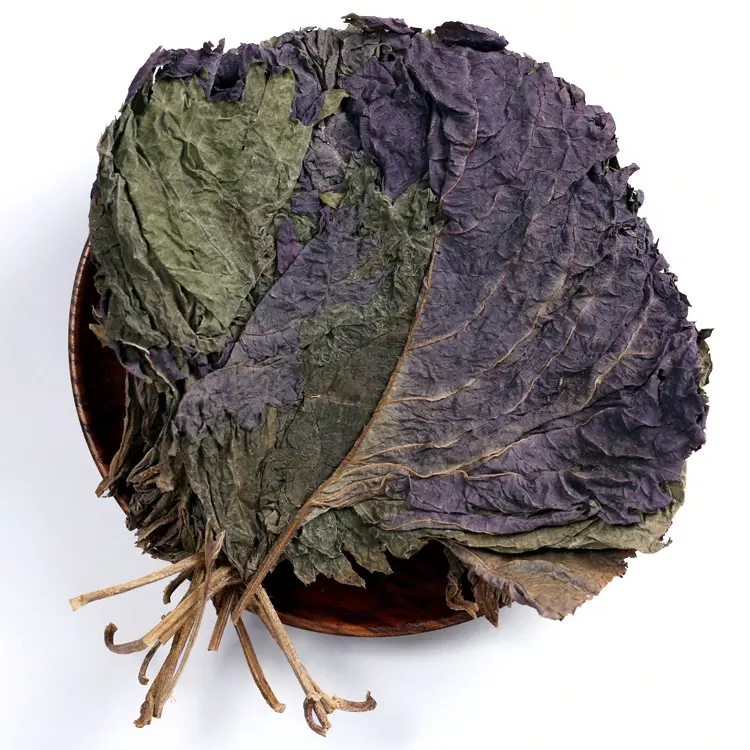
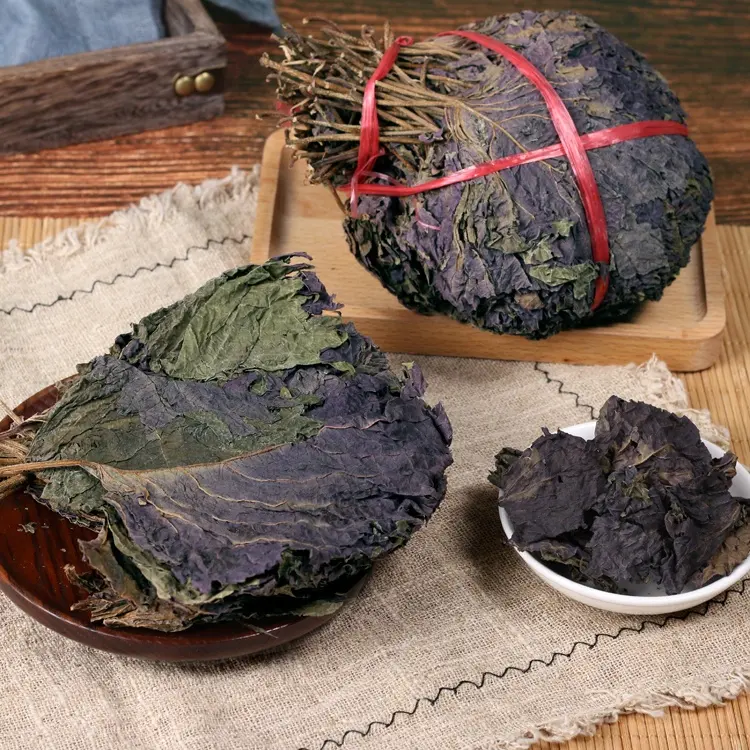
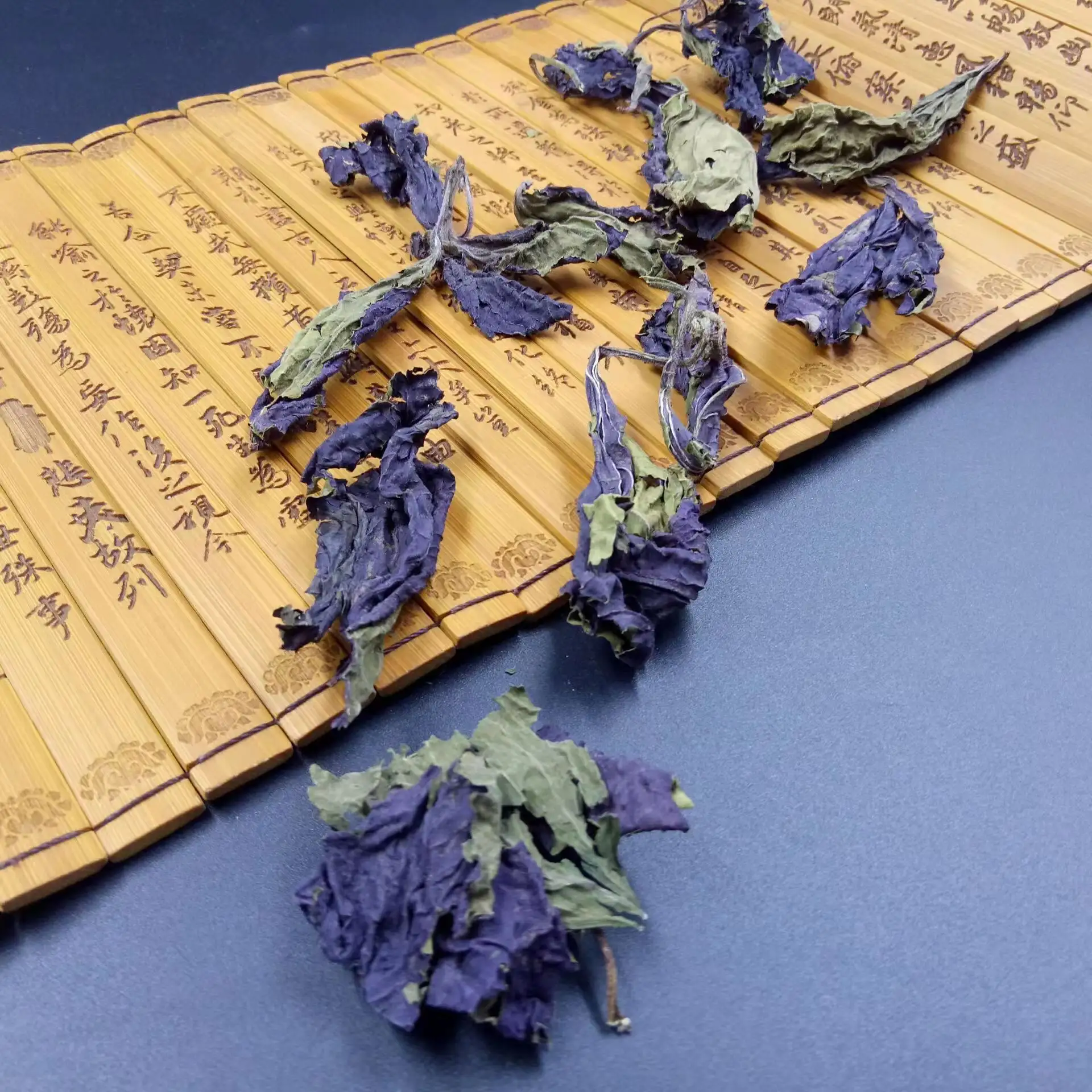



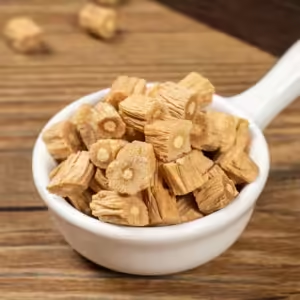
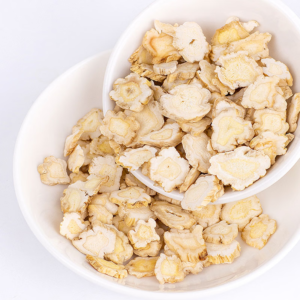
Resensies
Daar is nog geen resensies nie.